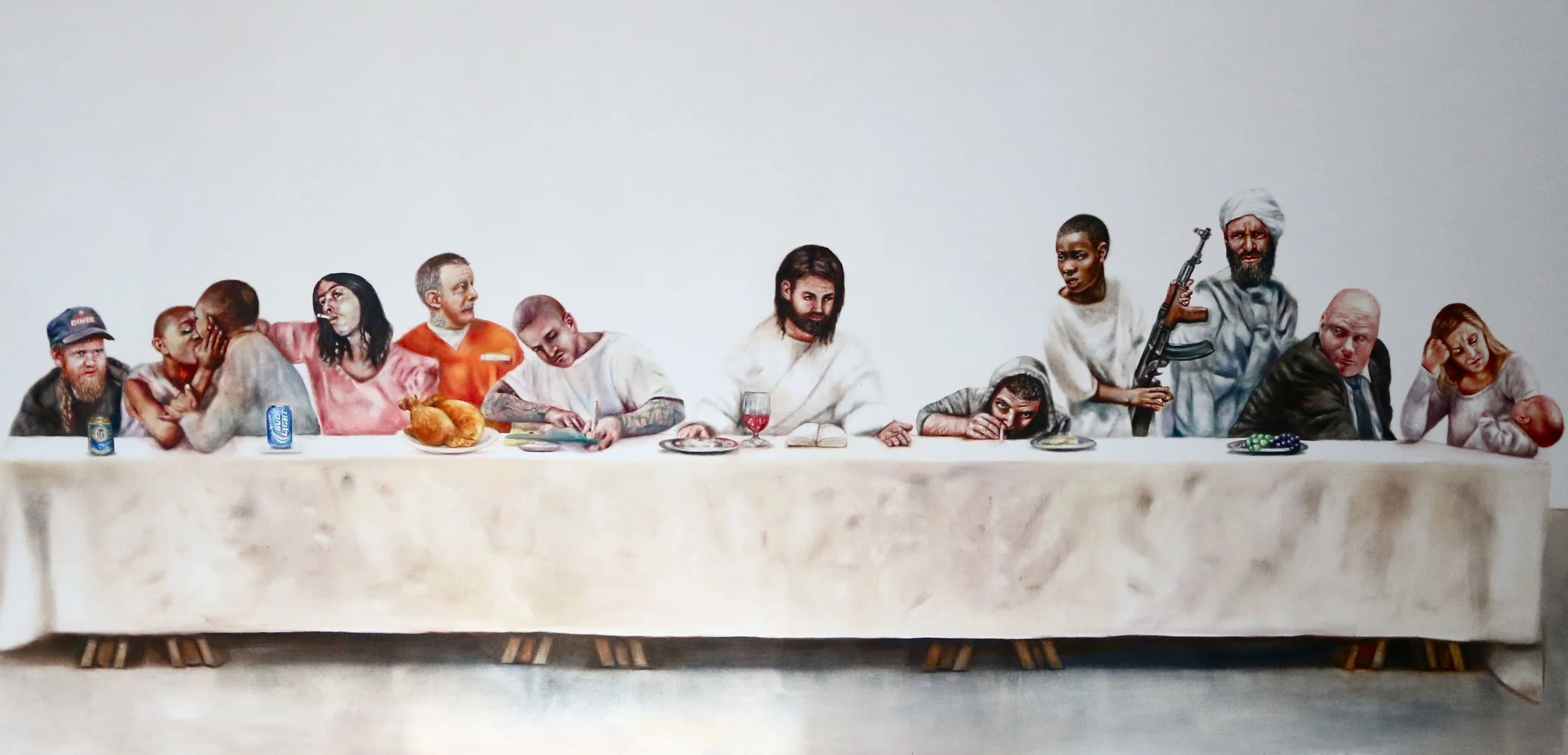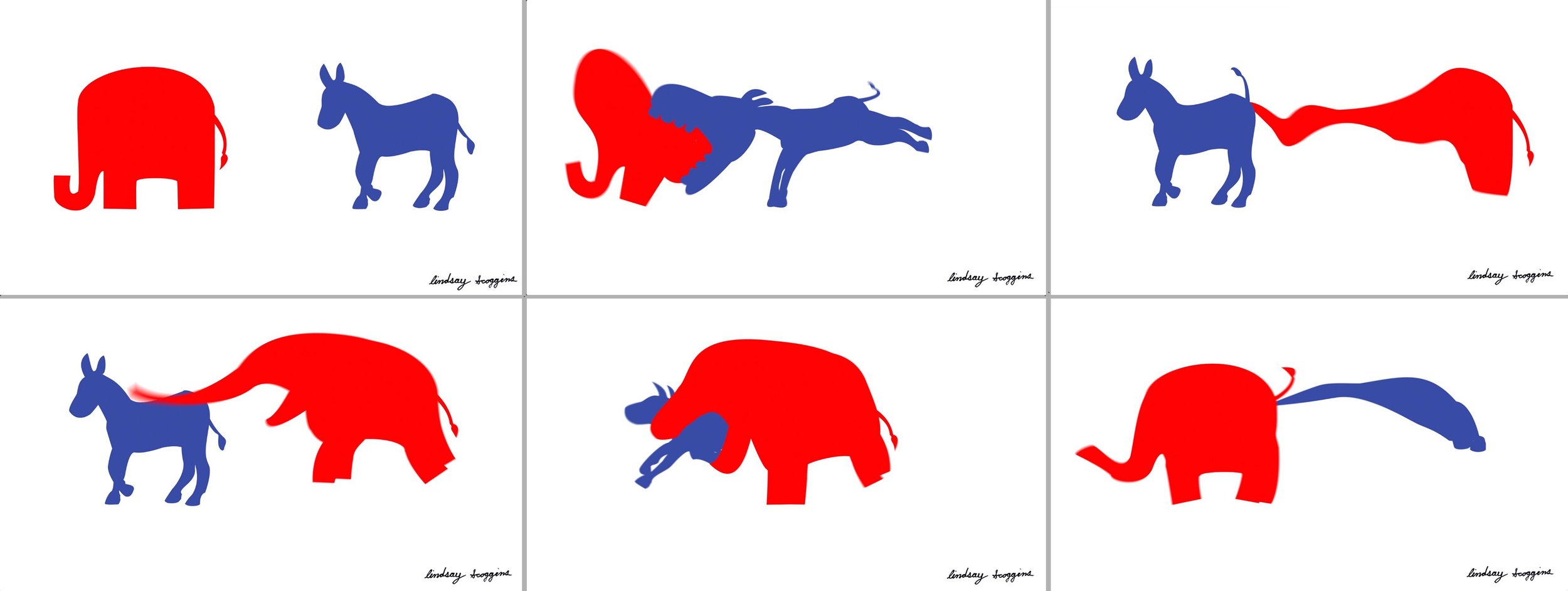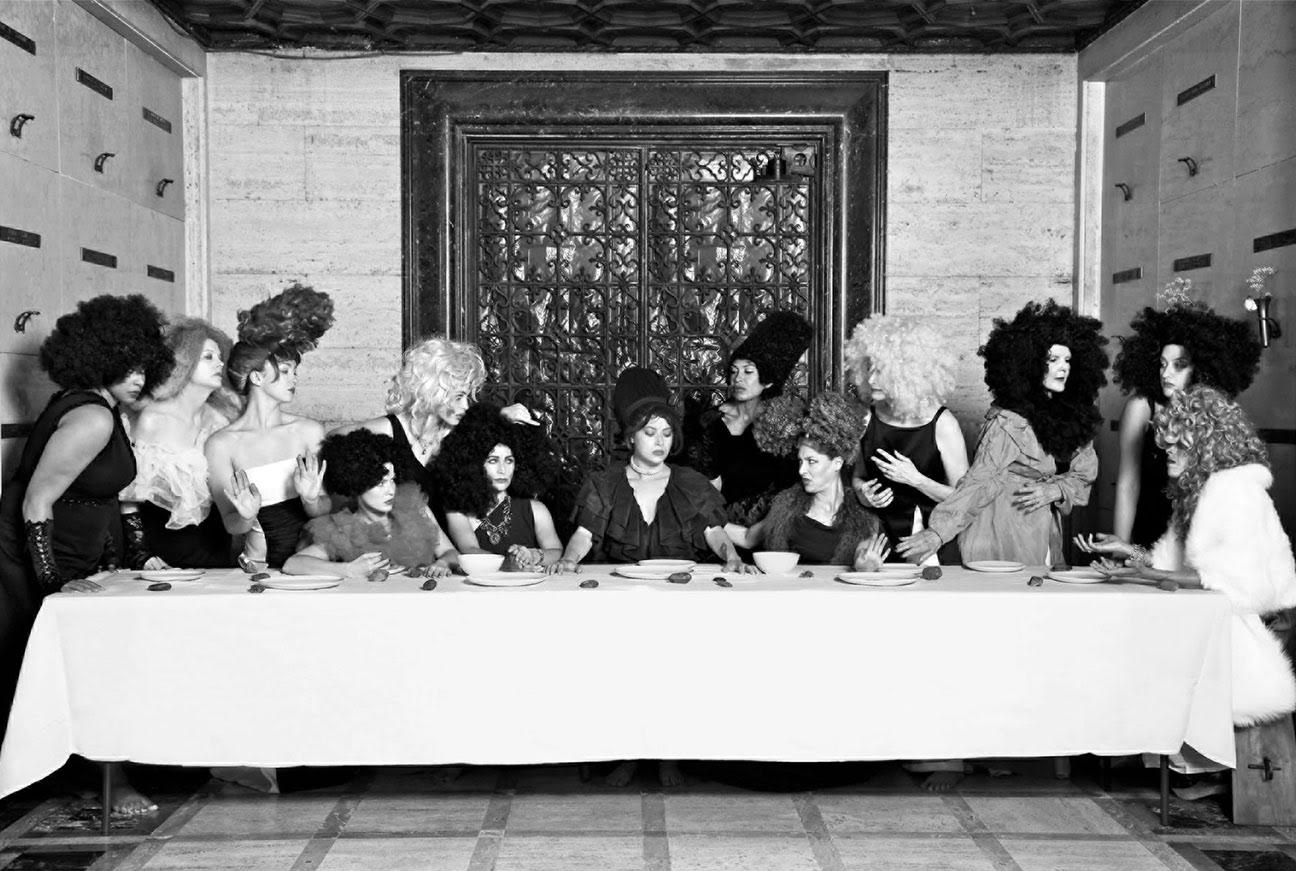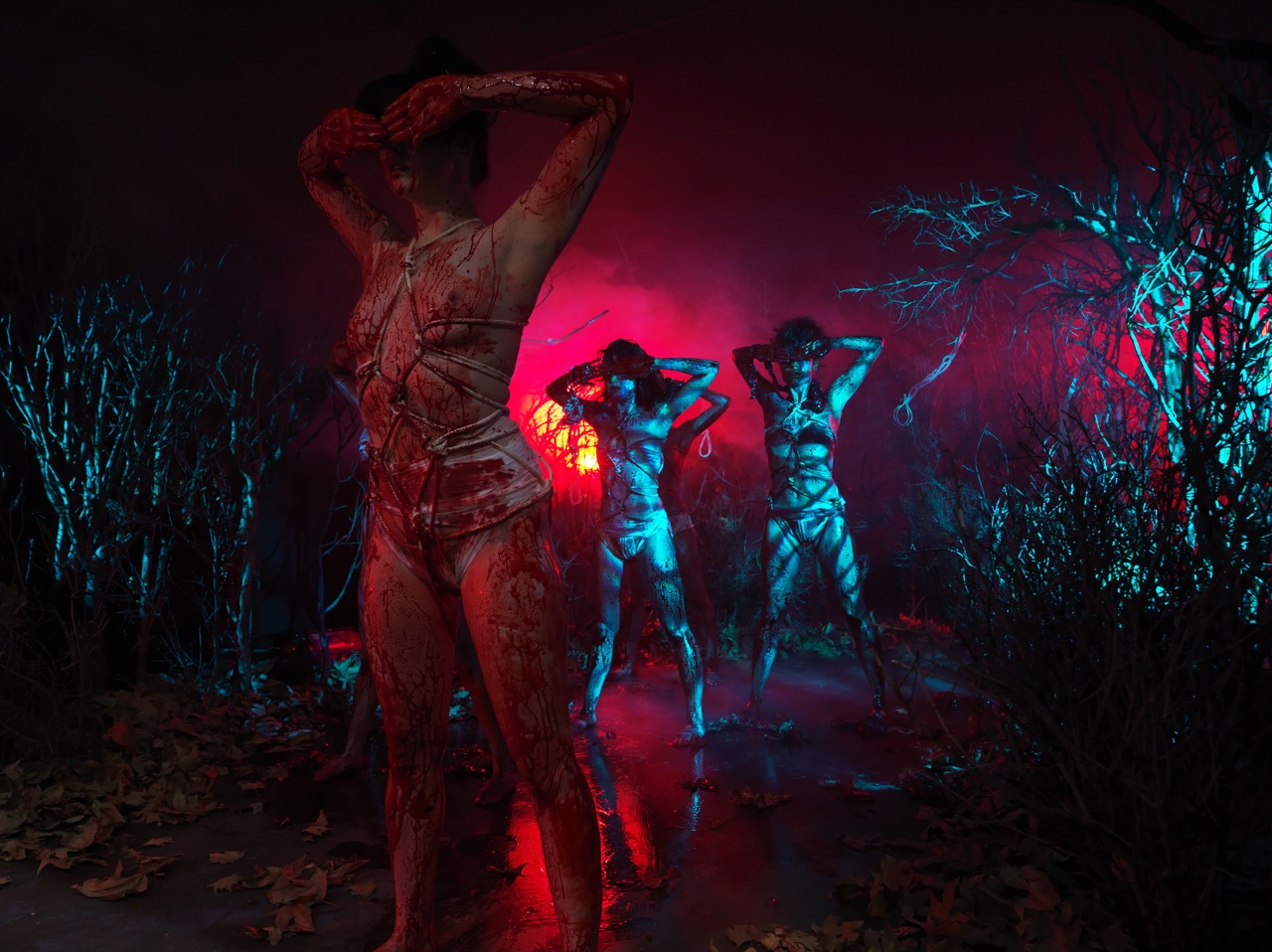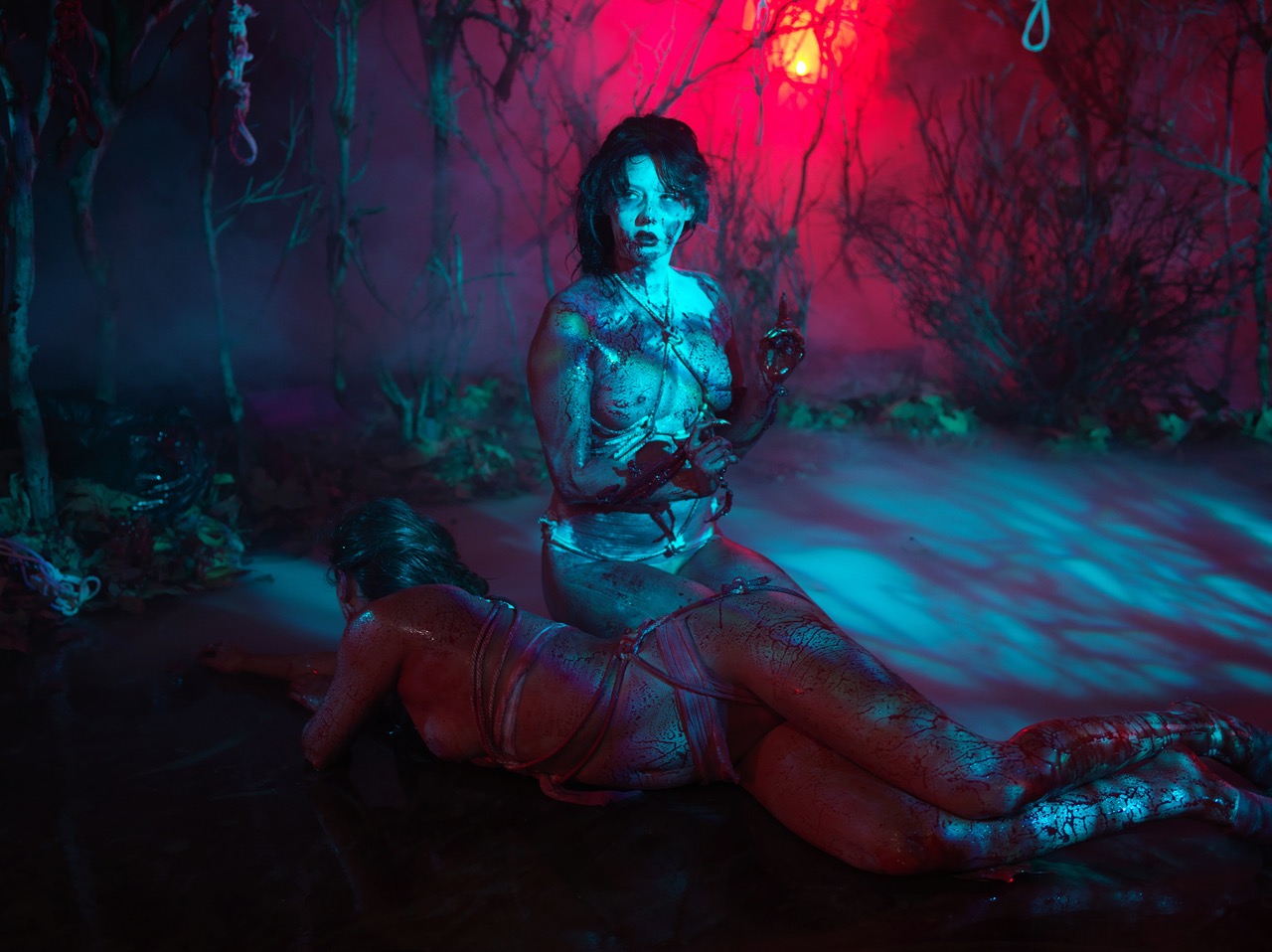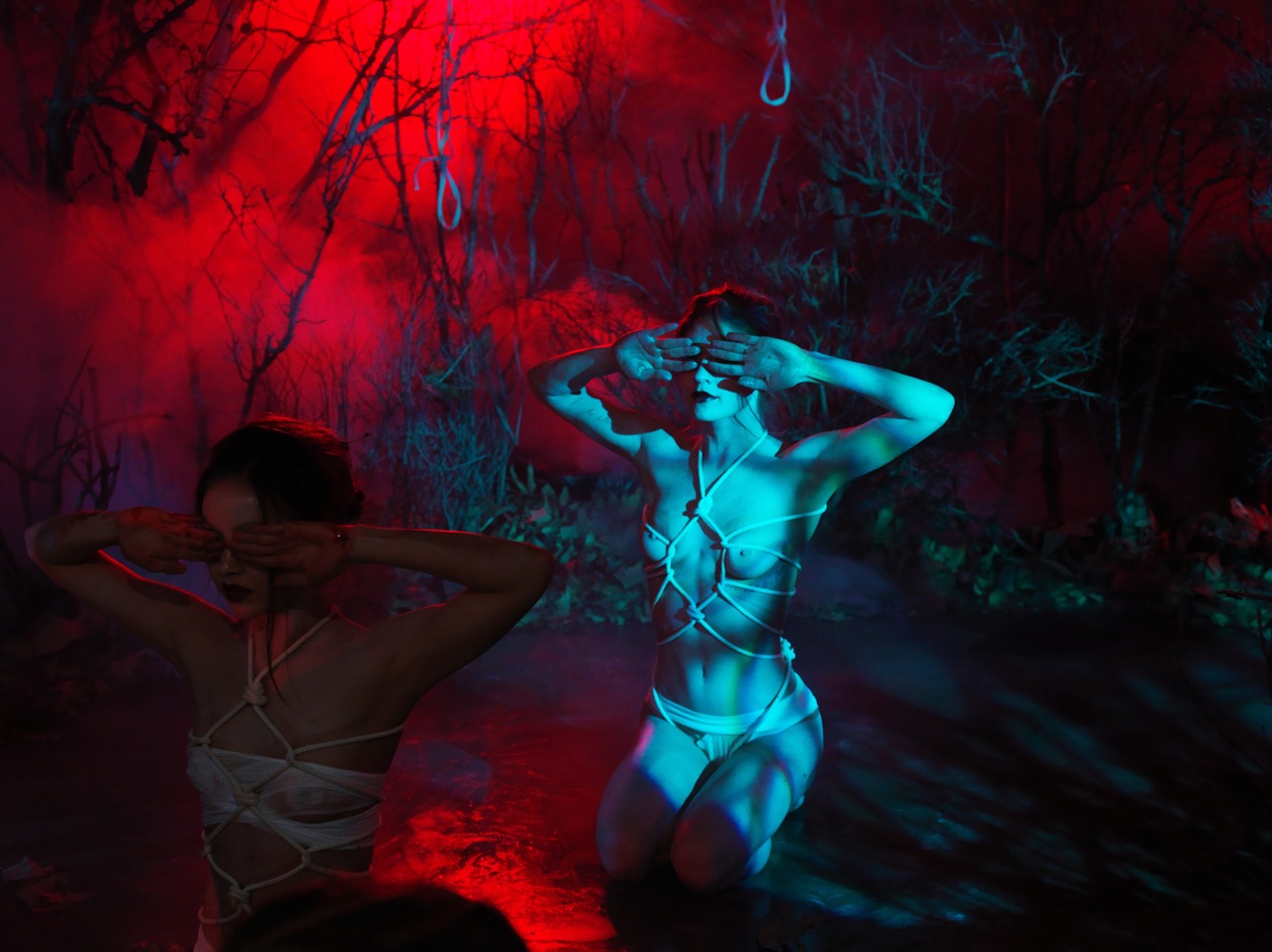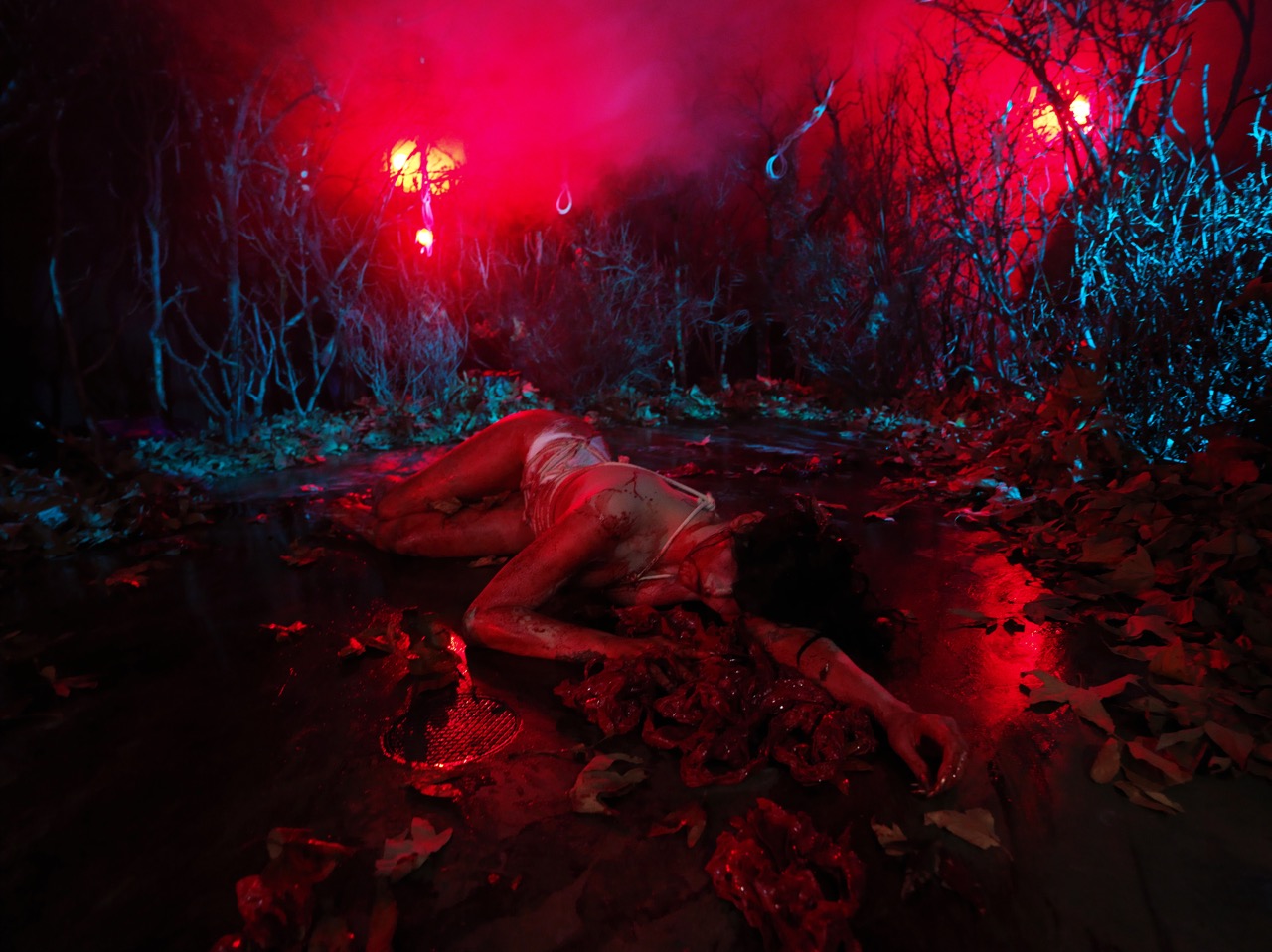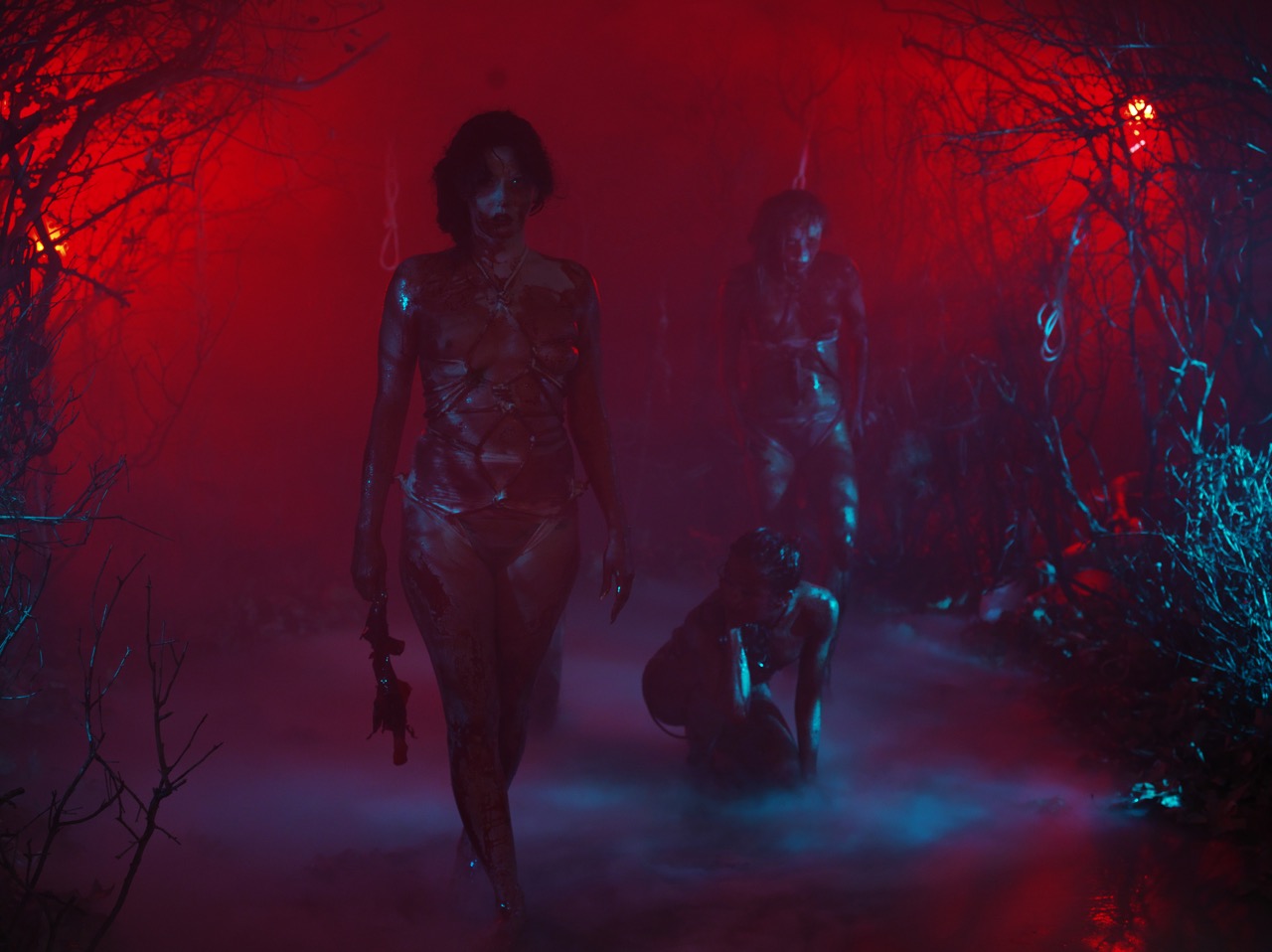Violent Times at the LA Art Show
By Christopher Ian Lutz @christopher_ian_lutz
One of the first works of art one would have seen displayed outside the entrance doors at this year’s LA Art Show was Lindsay Scoggins’ video installation Dichotomy Bifurcation, presented by Art All Ways. The animated video showed the cyclical regeneration of a Democratic donkey and a Republican elephant as they consumed one another.
Interestingly, on the same side of the convention hall that Dichotomy Bifurcation was placed, but inside the art show hall at the other end of the building was Christopher Ulrich’s The Last Supper, presented by Gregorio Escalante Gallery. Displayed right next to Ulrich’s painting was Johan Andersson’s Last Supper, presented by Art Unified. Also on display was Marjorie Salvaterra’s Her Last Supper, presented by ADC Contemporary & Building. One of the most noticeable details about the composition of Leonardo da Vinci’s The Last Supper is that Jesus Christ is placed in the center with his disciples on either side. This division of right and left is my first connection with Dichotomy Bifurcation, conceptually speaking.
The Last Supper paintings, as well as Dichotomy Bifurcation, also incorporated the element of blood. In Dichotomy Bifurcation there is no blood, but the two political symbols consuming each other is violent. During the last supper the apostles consumed the symbolic body and blood of Jesus. Consuming and digesting food is a transformative process that is within Dichotomy Bifurcation, however, consumption is not my second connection. The purpose of the last supper was for Jesus to symbolically give his body and blood to his apostles through the act of transforming the material into the spiritual through consecration, which today is performed through the Eucharist.
“This is my blood of the covenant, which is poured out for many for the forgiveness of sins.”
The Catholic tradition is that Jesus Christ was the redeeming sacrifice for his followers’ sins. Sacrifice is the key word indicating the mystery of transformation. Whether the events narrated in the New Testament actually occurred or not, the process of alchemical transformation that is taught remains relevant and is applicable in all of our lives, whether it’s regarding mystical or mundane matters. It is through sacrifice and ‘death’ that we can transform our individual lives.
My second connection was transformation and unity through the ritual of blood. We are living in violent times where social and military conflicts are changing the landscape of society. The art world has also had its casualties, such as ISIS destroying ancient artefacts in the Mosul Museum.
The themes of division and blood came together in one performance experience at the LA Art Show with Melanie Pullen’s Violent Times. In part the show was a live enactment of her Violent Times photography series, however the depiction did not reflect the specific photographs of this series. In collaboration with Molly D’amour who performed and choreographed Pullen’s concept into abstract dance expressionism, for five days, twice daily, five women performed morbid physical routines that interacted with the visceral sound design conducted by Drew Pluta, who hid behind the scenes with a soundboard. Pluta did not simply press a play button but instead conducted a unique sound experience for each performance to affect both the performers and the audience through subtle noises and the loud reverberations of Pullen’s breathing and heartbeat that he had recorded prior to the show.
I listened to people actually express their discomfort of the pulsating sounds, some of which actually left during the performance because they said they were feeling overwhelmed. Abhorrence was a complement in this case, because one of the intended effects of Pullen’s Violent Times show was to stimulate the audience’s senses and cause them to be immersed in the throes of fascination and disturbance.
The performers were bound and nearly naked. The performance was sexual in its building intensity that came to a climax of horror. As the breathing and heartbeat that pulsated from the speakers intensified the violent expressions of the performers became impassioned. The performance began clean, but as the rhythm accelerated, blood and guts soon covered their skin and was spilled across the entire floor. The audience that was able to handle the sound had to now endure the morbid display of blood play— but this wasn’t fun. Despite the sexual element, these girls weren’t extending their bodies as sexual objects to seduce the audience. Their mortified facial expressions and disjointed movements were unsettling. It was apparent that they were not aware of their self being the center of attention, an important factor in erotic performance. Though they were nude and in bondage, they were within the ritual of the performance feeling and reflecting desolation.
The Violent Times performances made statements on several levels, which connected with the political climate reflected in the artwork throughout the show, which connected with Dichotomy Bifurcation, which connected with salvation through blood.
How do we transform the violent times that we are living in? How do we make sense of the blood that is being shed around the world? Art is the lens through which I see the world and what I saw at the LA Art Show was the formula. Art quintessentially is an alchemical process of transforming base elements into gold. How many artists have you learned about that came from ruin but somehow channeled that hell through brush and pigment and painted divine works of art that inspired the masses long after their death? Such artists knew how to turn wine into holy blood, bread into sacred flesh.
The political splits between Democrats and Republicans, the division between the upper and lower classes, the inequality between black and white or female and male, are actual dualistic mindsets and social structures that we engage daily in our lives. At the center of our lives on an individual and a collective level we have ideals but we find ourselves conflicted by being separated.
These works of art act as prophesy, act as medicine, act as instruments to conduct internal transformation, and they act as inspiration to unify. So how do we endure our violent times? We find that center that brings together the division and the very blood that once divided us, literally and figuratively, will become our salvation.

